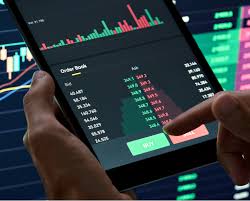
Unlocking the Future: Trading Automation Crypto
In the ever-evolving landscape of cryptocurrency trading, the advent of automation has transformed the way traders operate. Automation in trading, especially in the realm of cryptocurrencies, allows traders to execute trades efficiently and effectively without the need for constant monitoring of the market. With the right strategies and tools, automated trading can lead to increased profitability and reduced stress for traders. To learn more about the intricacies of this topic, Trading Automation Crypto click here to explore comprehensive guides and insights.
The Rise of Trading Automation in Crypto
The cryptocurrency market is known for its volatility. Prices can swing drastically within a short period, presenting both risks and opportunities for traders. Automation helps mitigate some of these risks by utilizing algorithms that can react to market conditions much faster than a human can. Automated trading systems (ATS) can be programmed to follow specific strategies, analyze multiple metrics, and execute trades based on pre-defined rules.
Advantages of Trading Automation
1. **24/7 Trading**: Unlike traditional markets, the crypto market operates 24/7. Automated trading systems can monitor and execute trades at any time, ensuring that traders never miss opportunities.
2. **Speed of Execution**: Automated systems can analyze market data and execute trades in milliseconds, capitalizing on fleeting market opportunities that a human trader might miss.
3. **Reduced Emotional Influence**: Trading can be emotionally taxing. Automated systems help in removing emotional factors from trading decisions, adhering strictly to the strategies they are programmed with.
4. **Backtesting Capabilities**: Traders can test their strategies against historical data, allowing them to adjust and optimize their trading tactics before applying them in real-time scenarios.
Types of Trading Automation Tools
There are several types of automated trading tools that traders can utilize, depending on their level of expertise and specific needs:

- Trading Bots: These are software programs that interact with financial exchanges to automatically place trades based on predefined criteria. Bots can be customized to follow various strategies, such as arbitrage, market making, or trend following.
- Algorithmic Trading Software: Designed for more advanced users, this software allows traders to create and deploy complex algorithms that can execute trades based on numerous market indicators.
- Signal Providers: Some platforms offer trade signals generated by experienced traders or algorithms. Users can follow these signals to inform their trading decisions, either manually or through automated execution.
- Portfolio Management Tools: Automation isn’t limited to trading alone. Portfolio management systems allow traders to automatically rebalance their portfolio based on target allocations.
Getting Started with Trading Automation
If you’re interested in incorporating automation into your cryptocurrency trading strategy, here are some steps to get started:
- Define Your Strategy: Understand your trading goals and risk tolerance. Identify the strategies you want to automate, whether it’s day trading, swing trading, or long-term holding.
- Choose the Right Tools: Research various trading platforms and tools available for automation. Ensure that they support the cryptocurrencies you wish to trade.
- Backtest Your Strategy: Use historical data to test the effectiveness of your automated strategy. Make necessary adjustments based on the results of the backtest.
- Start Small: Begin by deploying your automated strategy with a small amount of capital. This allows you to monitor its performance without risking significant funds.
- Monitor and Optimize: Regularly review the performance of your automated trades. Market conditions change, and your strategies may need adjustments to remain effective.
Risks of Trading Automation
While trading automation offers numerous benefits, it also comes with certain risks that traders must be aware of:
- Technical Failures: Automated systems can suffer from technical glitches, such as connectivity issues or software bugs, which can lead to unexpected losses.
- Over-Optimization: There’s a risk of creating a strategy that performs well on historical data but fails in live trading due to overfitting.
- Market Changes: Automated systems may not adapt quickly to changing market conditions, leading to suboptimal trading decisions.
- Security Risks: Automation involves trading through APIs, which can be vulnerable to hacking if proper security measures are not in place.
The Future of Trading Automation in Crypto
The future of trading automation in cryptocurrency is promising. As algorithms become more sophisticated and artificial intelligence continues to evolve, automated trading systems will likely become more effective and accessible to all traders. Additionally, the development of decentralized finance (DeFi) and smart contracts adds new layers of possibilities for automation in trading.
In conclusion, trading automation in crypto presents an exciting frontier for traders of all levels. While the journey may involve a learning curve, the potential rewards can be significant. By leveraging the right tools and strategies, you can enhance your trading experience and potentially accelerate your path to success in the cryptocurrency market.